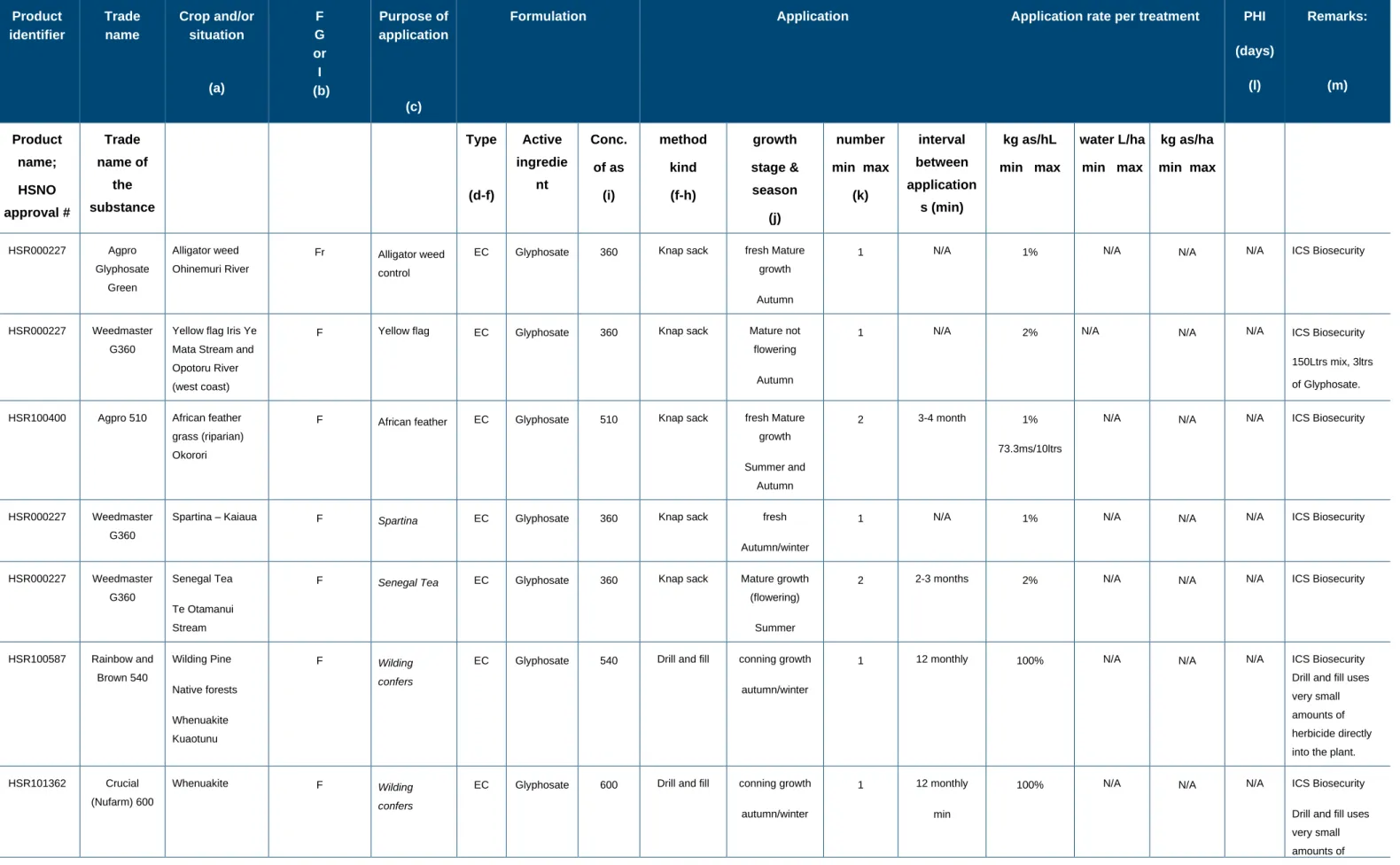We appreciate the opportunity to provide feedback on the call for information on glyphosate use in New Zealand. Waikato Regional Council (Council) primarily uses glyphosate products to perform its integrated drainage services and asset management functions, including land drainage, river management and flood protection assets. Glyphosate products are used to control and eliminate weeds in and around these key areas.
Glyphosate products are also used by the Council for biosecurity purposes in very low quantities in a targeted and controlled method when no other herbicides are available or when it is the recommended herbicide to manage a particular pest plant. Council applies glyphosate products primarily by hand, bag and aerial spraying, in accordance with label directions and guidance from technical experts and contractors. The Council follows all advice and regulations when handling, applying, storing and disposing of glyphosate products.
We specifically request information relating to the use and application of glyphosate in the various production and use scenarios in which it is used. We want to know more about the quantities of glyphosate products being imported, manufactured, sold and used in New Zealand. Doc Page 7 1.2 How much glyphosate products do you produce or import in New.
In these methods, either a small amount of gel is applied directly to the stump or a small amount of glyphosate is injected directly into drilled holes in the tree. The ICM operational program is responsible for the maintenance of flood protection assets, river management under flood and river protection schemes and soil drainage activities and is the largest user of Glyphosate products within the WRC, carrying out annual maintenance of these areas. The WRC uses very small amounts of glyphosate across the Waikato region to target plants that are very dangerous and rare pests.

Mitigation measures and controls
It is considered that the Council is not in a good position to comment on the effects of glyphosate on human health, the environment and Māori as we do not collect information or monitor these effects and the responsibility for this rests with the EPA. WRC also has agreements with providers such as Agricultural Lands to hold larger quantities than the storage units hold. WRC rarely holds unused glyphosate products, but in cases where we do, there are several chemical companies that will receive and dispose of them on our behalf, such as Hazchem Services Ltd2.
Impacts on Māori
Technical information
In March 2018, a WRC survey of glyphosate and AMPA monitoring in Kaniwhaniwha Stream detected glyphosate up to three hours after the completion of a three-hour Integrated Catchment Management (WRC) spray event at a location approximately 3 km downstream of the spray site. As part of the WRC regional estuary monitoring program, 25 estuarine sediment samples were collected in 2019 and analyzed for glyphosate and AMPA. The results of this analysis were received in May 2020 and three of these sediment samples (two from Raglan and one from the Firth of Thames) returned detectable levels of glyphosate and AMPA.
The glyphosate concentrations were higher than the AMPA concentrations in all three cases, indicating that the glyphosate was probably fairly fresh. Although no sediment guidelines are available for glyphosate, the sediment toxicity thresholds determined by Tsui and Chu (2004) for susceptible aquatic organisms were thousands of times higher than the concentrations detected in these three estuarine sediment samples.
Benefits and alternatives to glyphosate products
WRC relies heavily on glyphosate to reduce and control weed growth within drains to deliver its function of rural drainage. Without the availability of glyphosate or another suitable alternative herbicide, the cost of delivering this function would be significantly higher and potentially unsustainable as mechanical methods of weed removal would have to be adopted. Loss of habitat for species such as Tuna (Palings), potential spawning grounds for Inunga and feeding and breeding habitat for birdlife.
The impact of a glyphosate ban on the WRC pest plant biosecurity functions is considered to be minor.
Hearing your views
We do not believe that the Council is well placed to comment on the effects of glyphosate on environmental, economic, social and cultural well-being, as we do not collect and monitor information on effects, which is the responsibility of the EPA. See the response to 7.4 for the potential impact on the WRC if glyphosate products were no longer available for use. The costs and benefits of glyphosate must be well understood in order to make an informed decision.
It is felt that the Board is not well placed to comment on the effects of glyphosate on the community as we do not collect information on or monitor these effects and the responsibility for this rests with the EPA. Please return the completed form and associated information by emailing it to [email protected] or by posting it to us at: Glyphosate call for information,. Conflicting views and information from both local and international media sources on the use and effects of glyphosate are a matter of public concern.
As a local government, the WRC is expected to provide information and answers to community concerns and questions, which is difficult without guidance and information from the EPA. It is believed that thorough assessments of the effects of glyphosate should be conducted as a first step in the glyphosate assessment process.
Scope / Introduction
Hazards
Required Training/Competency
PPE/equipment
Mixing chemical
Pre-start/initial checks
Operation/task
Use insect repellent if necessary and bring appropriate medications if you are allergic to bees or other insects. Check if fences are electric or not and check if they are alive. Be aware of traffic regulations and other road users, especially when entering or leaving a road.
If the public is approached, stop spraying when they come within 20 meters of the sprayer and ask them to leave the area.
Completion of task/final checks
Maintenance
Approval of procedure